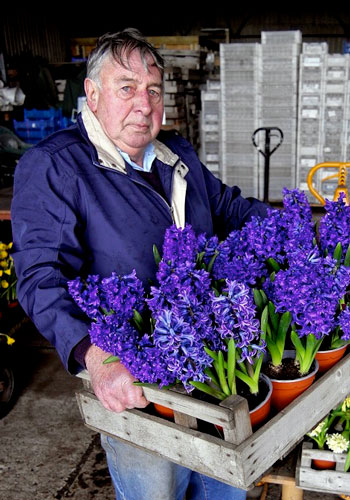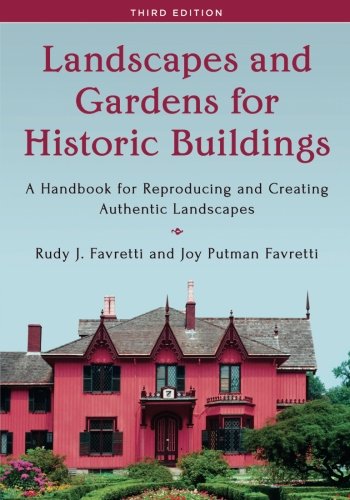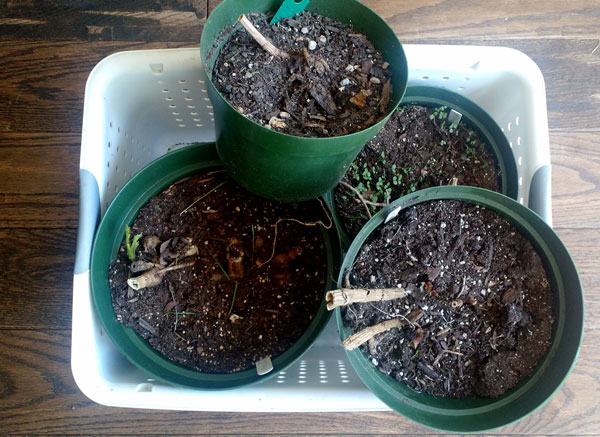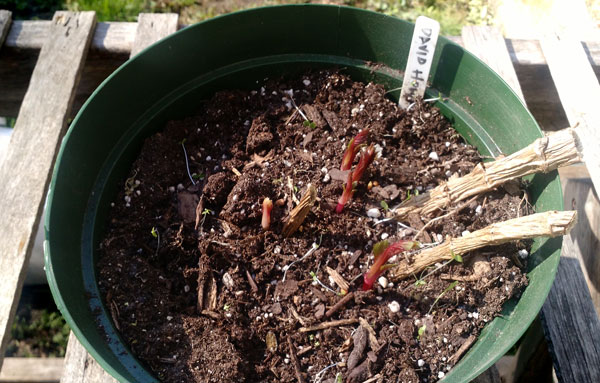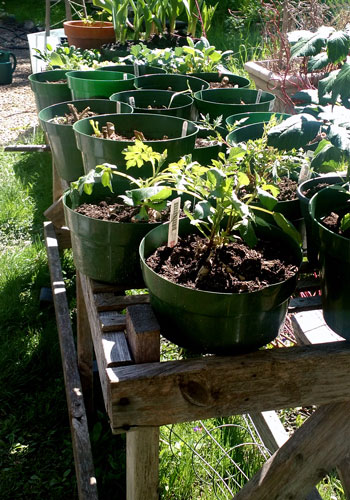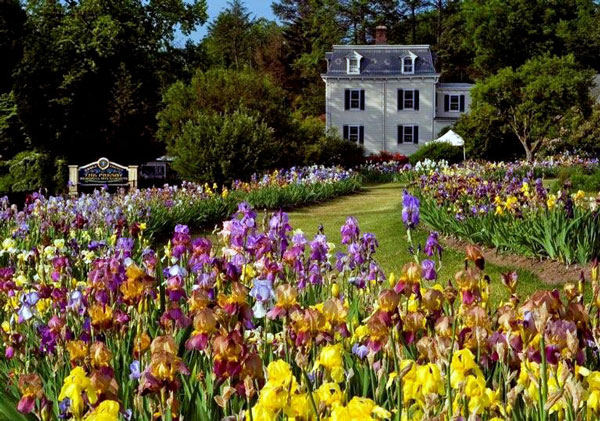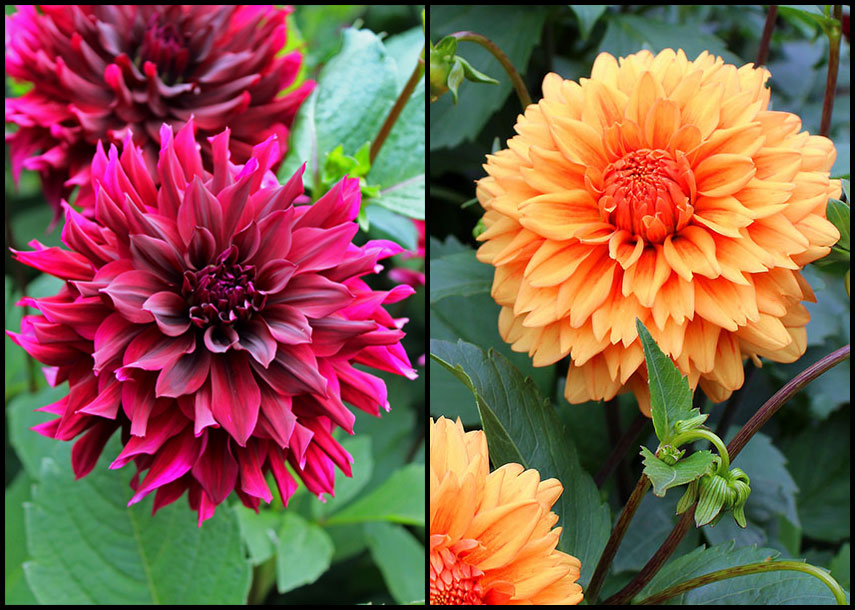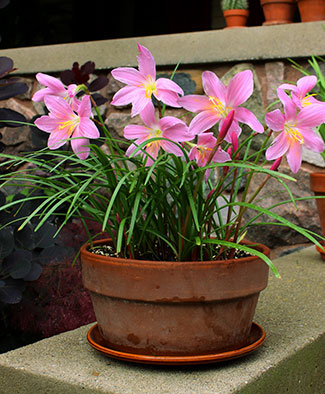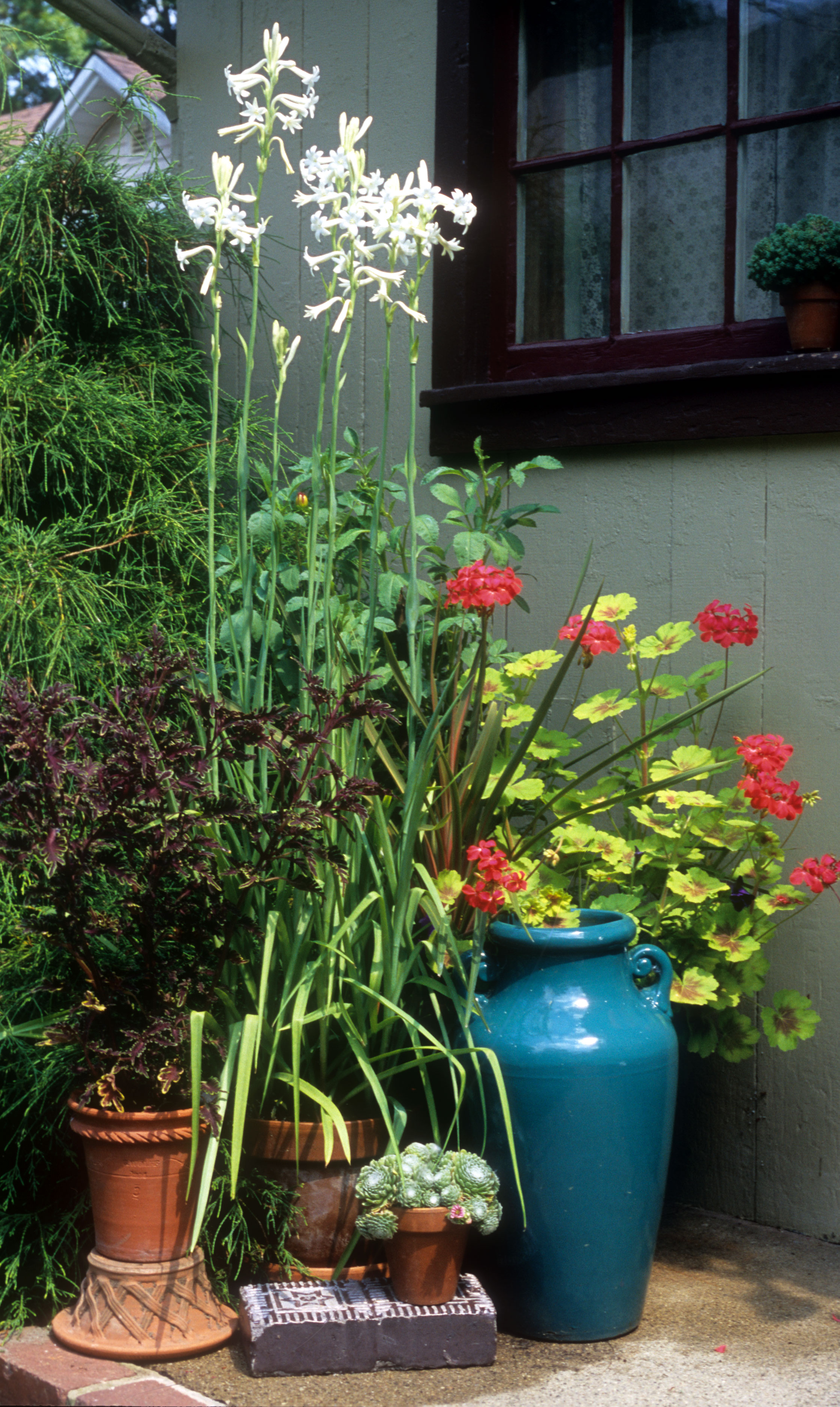If you haven’t planted your dahlias yet, here’s a simple way to grow and store them from our good customer Jenn Hovland of Fleur de Louise Flower Studio in Stillwater, Minnesota.
dahlias stored in the basement
“For several years now I have stored my dahlia tubers ‘in the dry’ as they do in England,” Jenn wrote on her spring order. “I start by planting a new tuber in a 1 or 2 gallon plastic pot. I lay it flat near the top of the pot, cover it with just an inch of soil, water it once, and then leave it alone until sprouts emerge.
“When the weather warms up, I plant it outside, pot and all, with the pot buried about halfway and a stake pounded in the ground next to it. I always use black or green pots so whatever isn’t buried or hidden by other plants is still pretty much invisible.
“At the end of the season when frost blackens the foliage, I wait a few days, lift the entire pot, cut back the dead foliage, let it dry on my porch for a couple of days, and then put it in the basement and forget about it. In March or April when I notice new growth, I move it upstairs to a sunny window and it’s ready for the new season.
‘David Howard’ starting to sprout
“By using this method, I've lost very few tubers to rot or drying out. Although it takes a little extra space to store the pots, it has worked very well for me.”
Wanting to know more, I emailed Jenn and she cheerfully answered all of my questions.
One-gallon pots seemed small to me, so I was surprised to learn that she sometimes uses even smaller ones. Pot size doesn’t seem to matter much because, although the tuber-cluster remains confined within the pot, its feeder roots grow through the holes in the bottom. When the pot gets crowded after a couple of years, Jenn divides the cluster and starts all over again.
dahlias hardening off before pots are buried
During the winter she keeps the pots as dark as possible because light encourages sprouting. In March she starts checking for new growth, and when the first sprouts appear – this year in mid-April – she adds an inch of compost to all pots, waters them once, and moves them to a sunny window.
“Then in May,” she told me, “I take the plants outside to harden them off for a couple of weeks, bringing them in at night until they adjust to outdoor living. By mid-May they’ll be staying outside overnight, except when frost is predicted. I finally plant them in the garden around Memorial Day. By then they are quite large plants – which means they’ll bloom earlier.”
That sounds good to me, and I’m planning to give Jenn’s method a try. If you do, too, please let us know your results so we can learn from you as well!
